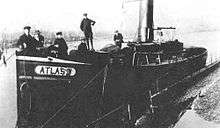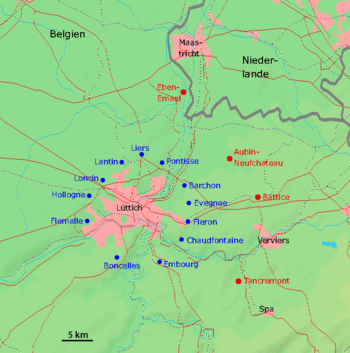Atlas V (tugboat)

The Atlas V (Atlas 5) was a Belgian tug boat which was armed by resistance forces under the command of Jules Hentjens during the First World War. On the night of 3 and 4 January 1917, the boat arrived in The Netherlands with 107 people aboard, from Liege, Belgium, which was occupied by German troops.
Context

Belgium had been invaded in August 1914 by German troops, and Liege, except for the strengthened belt of Liege, was taken following this. Only the North-West of the country was still under Belgian rule, and under command of King Albert.
Many Belgians sought to join the still active Belgian army. Others attempted to escape the country. For the inhabitants of Liège, this was generally done via Maastricht, in the Netherlands, who were neutral. The city was only 30 kilometres from the Dutch border.
Specifications
Some of the technical specifications include:
- length: 23.5 metres
- width: 5.5 metres
- height: 3.5 metres
- power: 35 HP
Escape
The Atlas V arrived at about midnight, at the beginning of Coronmeuse, on the left bank in the north of the city. It was carried by the current, passing through the populated localities of Herstal and Jupille without encumberment. The boat was discovered only near Argenteau/Hermalle-under-Argenteau, and attacked by a car-boat. This sank in its wake. The Atlas V then proceeded at 45 km/h, and encountered heavy fire all along the river, lit by powerful lights. Later, the tug boat broke the railway bridge downstream of Visé, then tore off the electrified chain and wire which barred the river. It ran into a pontoon armed with machine-guns and escaped from intense fire. It approached the right bank of the Meuse at Eisden in the Netherlands (opposite Ében-Émael) around one in the morning, with the sound of Brabançonne and Belgian flag to the wind.
The boat was recovered by its owner in Liege 4 days later.
The family of Jules Hentjens, suspected of assisting in the escape, were arrested and given long prison sentences.